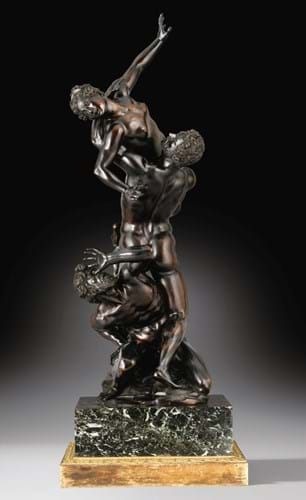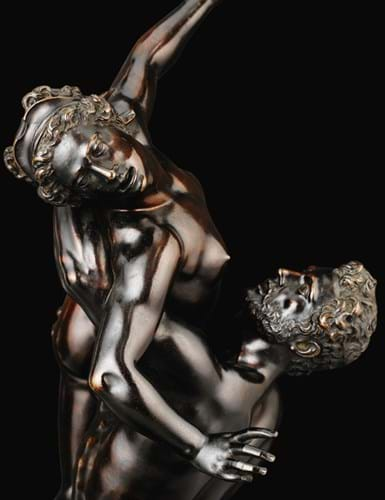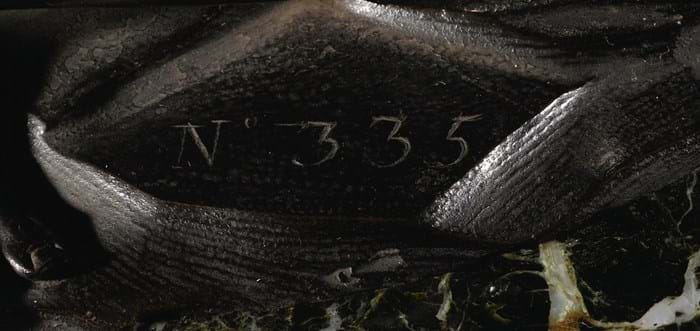
The Ribes Sabine, with a French royal provenance, was acquired for the collection at the Palace of Versailles at a record €4.5m (including buyer’s premium) on December 11.
The 2ft (60cm) bronze is considered one of the prime casts of this seminal Florentine late Renaissance model. It joins a corpus of perhaps four other extant bronzes thought to have been made during Giambologna’s (1529-1608) lifetime by his talented studio assistant Antonio Susini (1558-1624).
These early casts, dating from c.1583 (the date of the finished marble at the Loggia dei Lanzi) until c.1610, share a number of common characteristics: incised pupils and irises to the eyes of each figure; the figure of the cowering Roman with a full beard that covers his chin; the Sabine woman wears a diadem.
The Ribes Sabine has been documented from 1689 in the French royal collection. It is one of two bronzes of the Rape of a Sabine in the collection of the Grand Dauphin, son of Louis XIV.
The engraved collection number 335 was added to the bronze between 1711-13 and in c.1785 the famous French bronzier, Pierre Gouthiére (1732-1813) was employed to restore it and to provide the then fashionable ‘smoke-colour’ patina ‘en couleur de fumée’.
It may have also been at this time that fig leaves were attached to the male protagonists (they had been recently removed) and the bronze was given its associated green marble and gilt-bronze socle.
After the Revolution, the bronze was given in payment in 1796 to the state creditor Gabriel-Aimé Jourdanl, then passed to his godson and adoptive son, Aimé-Gabriel d’Artigues (1773-1848). His only daughter, Anne-Gabrielle d’Artigues (1833-1909), married Charles-Edouard, 3rd Comte de Ribes (1824-1896) and by 1865, the bronze took its place in the family’s newly built hôtel particulier on rue de la Bienfaisance. When it was last exhibited in 1956, its significance was not fully recognised.
The Palace of Versailles used it right of preemption to acquire the bronze on December 11, although not before bidding had reached an artist’s record.
The price bettered the previous high, the £3.67m bid at Christie’s Exceptional sale in London in 2014 for another early version of the Sabine, one that is signed Gio Bologne that has been dated to c.1587-98 and is considered the earliest of the five known ‘prime’ casts.
The Ribes collection, began in the middle of the 19th century, was sold by the fashion designer Jacqueline de Ribes (née Jacqueline de la Bonninière de Beaumont) widow of the late Edouard de Ribes (1923-2013). The sell-out sale totalled a premium-inclusive €22.8m.







